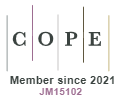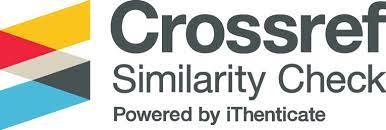Bank’s Information Reliability – a Perspective of a Senior Using Services on the Banking Market
DOI:
https://doi.org/10.18778/2391-6478.3.31.09Keywords:
public trust, public guarantees, information reliability, banking sector, senior on the banking services marketAbstract
The purpose of the article/hypothesis: The aim of the article is to present the essence of a bank's information reliability and its assessment by a selected group of stakeholders, which are seniors. The conducted study allowed for the positive verification of the following research hypothesis: the bank's information reliability is an important factor that influences the bank's assessment by seniors.
Methodology: The text has been divided into three parts. Two of them are theoretical and the authors focused here on a critical analysis of the literature on the subject. The first one describes the problem of trust in banks and public guarantees as factors influencing the shape of the sector. The second part focuses on presenting important issues related to the broadly understood information in the bank–client relationship. In the empirical part of the article, a questionnaire study was conducted in which the information reliability was assessed from the perspective of seniors using banking services.
Results of the research: The research showed that 75% of the respondents had in practice encountered a situation in which the bank provided incomplete or false information. Two-thirds of the respondents also emphasized that information credibility is an important element of building trust in a bank. On the other hand, less than half of them indicated that the bank's information message was legible. Keywords: public trust, public guarantees, information reliability, banking sector, senior on the banking services market.
Downloads
References
Belanche Gracia, D. and Casaló Ariño, L.V. (2015). Rebuilding public trust in government administrations through e-government actions. Revista Española de Investigación de Marketing ESIC, 19 https://reader.elsevier.com/reader/sd/pii/S1138144214000072?token=F78646F2761078832C5213B7A28A8F2F51CB42447C0ADF1520208CB26FEE19DB8F84FC6A09AF7B63402038A23DE9D4C5 (dostęp 10.01.2021).
Google Scholar
Brenan, M. (2020). Amid Pandemic, Confidence in Key U.S. Institutions Surges. Politics, August 12 https://news.gallup.com/poll/317135/amid-pandemic-confidence-key-institutions-surges.aspx (dostęp 27.01.2021).
Google Scholar
Cichorska, J. (2017). Misselling, czyli sprzedaż niepotrzebnych instrumentów finansowych i jej skutki. Stan prawny w Polsce i Wielkiej Brytanii. Rozprawy ubezpieczeniowe. Konsument na rynku usług finansowych, 24 (2) https://ru.rf.gov.pl/wp-content/uploads/2017/08/RU24_2.pdf (dostęp 15.02.2021).
Google Scholar
Chernykh, L., Davydov D. and Sihvonen J. (2019). Financial Stability and Public Confidence in Banks. BOFIT Discussion Paper, 2 https://papers.ssrn.com/sol3/papers.cfm?abstract_id=3339743 (dostęp 26.01.2021).
Google Scholar
Chryssochoidis, G., Strada, A. and Krystalli, A. (2009). Public trust in institutions and information sources regarding risk management and communication: Towards integrating extant knowledge. Journal of Risk Research, 12(2).
Google Scholar
DOI: https://doi.org/10.1080/13669870802637000
Directive (EU) No 2019/878 of the European Parliament and of the Council of 20 may 2019 amending directive 2013/36/EU as regards exempted entities, financial holding companies, mixed financial holding companies, remuneration, supervisory measures and powers and capital conservation measures, OJ L 150/253, 7.6.2019.
Google Scholar
Directive 2013/36/EU of the European Parliament and of the Council of 26 June 2013 on access to the activity of credit institutions and the prudential supervision of credit institutions and investment firms, amending Directive 2002/87/EC and repealing Directives 2006/48/EC and 2006/49/EC, OJ L 176/338, 27.6.2013.
Google Scholar
Franke, G., Mosk, T. and Schnebel, E. (2016). Fair Retail Banking: How to Prevent Misselling by Banks? White Paper, 39 https://safe-frankfurt.de/fileadmin/user_upload/editor_common/Policy_Center/Franke-Mosk-Schnebel-Fair_Retail_Banking.pdf (dostęp 09.03.2021).
Google Scholar
Gallup Poll: Americans’ Confidence in Banks Holds Steady, on 10.07.2019 https://bankingjournal.aba.com/2019/07/gallup-poll-americans-confidence-in-banks-holds-steady/# (dostęp 27.01.2021).
Google Scholar
Hornowska, A. (2019). Tajemnica bankowa – konstrukcja, przesłanki, procedura ochrony i zwolnienia – ujęcie komparatystyczne. Prawo karne i kryminologia. Warszawa: Instytut Wymiaru Sprawiedliwości.
Google Scholar
Hurley, R.F. (2006). The Decision to Trust – from the Magazine https://hbr.org/2006/09/the-decision-to-trust (dostęp 14.01.2021).
Google Scholar
Idzik, M. and Gieorgica, J. (2020). Reputacja sektora bankowego 2020 – kluczowe wyniki i wnioski z badania (Reputation of the Bankig Sector in 2020 – Key Results and Conclusions). Bezpieczny Bank, 3(80).
Google Scholar
Jakubowska, A. (2017). Zaufanie i asymetria informacji w relacjach podmiotów na rynku finansowym- wybrane aspekty na przykładzie banków i ich interesariuszy. Zeszyty Naukowe Politechniki Śląskiej, 1992 https://www.polsl.pl/Wydzialy/ROZ/ZN/Documents/z113/Jakubowska%20A.pdf (dostęp 03.03.2021).
Google Scholar
DOI: https://doi.org/10.29119/1641-3466.2017.131.9
Jurevičienė, D. and Skvarciany, V. (2013). The concept of confidence in bank. The 7th International Days of Statistics and Economics, Prague https://www.researchgate.net/publication/264746430_THE_CONCEPT_OF_CONFIDENCE_IN_BANK (dostęp 19.01.2021).
Google Scholar
KPMG (2019). Czy klient jest najważniejszy? Na bank! Analiza doświadczeń klienckich oferowanych przez banki w Polsce https://assets.kpmg/content/dam/kpmg/pl/pdf/2019/10/pl-raport-kpmg-pt-czy-klient-jest-najwazniejszy-na-bank.pdf (dostęp 07.03.2021).
Google Scholar
Lee, K.C. and Chung, N. (2009). Understanding factors affecting trust in and satisfaction with mobile banking in Korea: A modified DeLone and McLean's model perspective, Interacting with Computers, 21(5–6), p. 3–4 https://www.researchgate.net/publication/262162793_Understanding_factors_affecting_trust_in_and_satisfaction_with_mobile_banking_in_Korea_A_modified_DeLone_and_McLean%27s_model_perspective (dostęp 26.01.2021).
Google Scholar
DOI: https://doi.org/10.1016/j.intcom.2009.06.004
Młodzik, L. (2018). Zaufanie jako kluczowa wartość organizacji publicznych w świetle badań żołnierzy zawodowych Wojska Polskiego. Marketing i Zarządzanie, 1(51).
Google Scholar
DOI: https://doi.org/10.18276/miz.2018.51-27
Orlicka, J. (2015). Zakaz stosowania klauzul abuzywnych i missellingu w znowelizowanej ustawie o ochronie konkurencji i konsumentów. Prawo asekuracyjne, 4(85) http://prawoasekuracyjne.polbrokers.pl/wp-content/uploads/2017/08/pdf_orlicka_4_2015.pdf (dostęp 15.02.2021).
Google Scholar
Ostrowska-Dankiewicz, A. (2019). Consumer protection policy in the Polish life insurance market in the aspect of current legal regulations. Investment Management and Financial Innovations, 16(4).
Google Scholar
DOI: https://doi.org/10.21511/imfi.16(4).2019.15
Paduszyńska, M. (2019). Misselling jako nadużywanie zaufania klienta na rynku finansowym. Annales. Ethics in Economic Life, 22(3) http://www.annalesonline.uni.lodz.pl/archiwum/2019/2019_3_paduszynska_45_60.pdf (dostęp 07.03.2021).
Google Scholar
DOI: https://doi.org/10.18778/1899-2226.22.3.04
Raczkowski, K. i Markiewicz, A. (2015). Wpływ asymetrii informacji w sektorze finansowym na zarządzanie w systemie gospodarczym. W: K. Raczkowski, red., Zarządzanie w systemie gospodarczym. Szanse i zagrożenia. Warszawa: Wolters Kluwer.
Google Scholar
Radziszewski, E. (2013). Bank jako instytucja zaufania publicznego. Gwarancje prawne i instytucjonalne. Warszawa: KNF https://www.knf.gov.pl/knf/pl/komponenty/img/Bank%20jako%20instytucja%20zaufania%20publicznego_36396.pdf (dostęp 26.01.2021).
Google Scholar
Regulation (EU) 2019/876 of the European Parliament and of the Council of 20 May 2019 amending Regulation (EU) No 575/2013 as regards the leverage ratio, the net stable funding ratio, requirements for own funds and eligible liabilities, counterparty credit risk, market risk, exposures to central counterparties, exposures to collective investment undertakings, large exposures, reporting and disclosure requirements, and Regulation (EU) No 648/2012, OJ L 150.1, 7.6.2019.
Google Scholar
Regulation (EU) No 575/2013 of the European Parliament and of the Council of 26 June 2013 on prudential requirements for credit institutions and investment firms and amending Regulation (EU) No 648/2012, OJ L 176, 27.6.2013.
Google Scholar
Rzecznik Praw Obywatelskich (2013). Osoby starsze na rynku usług finansowych – analiza i zalecenia. Warszawa: Zasady Równego Traktowania. Prawo i Praktyka https://www.rpo.gov.pl/sites/default/files/Osoby%20starsze%20na%20rynku%20us%C5%82ug%20finansowych.%20Analiza%20i%20zalecenia_0.pdf (dostęp 08.03.2021).
Google Scholar
Skvarciany, V. and Jurevičienė, D. (2018). Factors Influencing Individual Customers Trust in Inter-net Banking: Case of Baltic States. Sustainability, 10(12), 4809 https://www.researchgate.net/publication/329741245_Factors_Influencing_Individual_Customers_Trust_in_Internet_Banking_Case_of_Baltic_States (dostęp 26.01.2021).
Google Scholar
DOI: https://doi.org/10.3390/su10124809
Stolper, O. (2018). It takes two to Tango: Households’ response to financial advice and the role of financial literacy. Journal of Banking and Finance, 92.
Google Scholar
DOI: https://doi.org/10.1016/j.jbankfin.2017.04.014
Tripp, E. (2015). How to Restore Public Trust in Banking. Ivey Business Journal, January/February https://iveybusinessjournal.com/how-to-restore-public-trust-in-banking/ (dostęp 14.01.2021).
Google Scholar
Ustawa z dnia 29.08.1997 r. Prawo Bankowe, tj. Dz.U. 2020, poz. 1896, 2320, 2419.
Google Scholar
[www1] http://wiep.pl/instytucja-zaufania-publicznego-encyklopedyczne/ [dostęp 19.01.2021].
Google Scholar
Downloads
Published
How to Cite
Issue
Section
License

This work is licensed under a Creative Commons Attribution-NonCommercial-NoDerivatives 4.0 International License.














